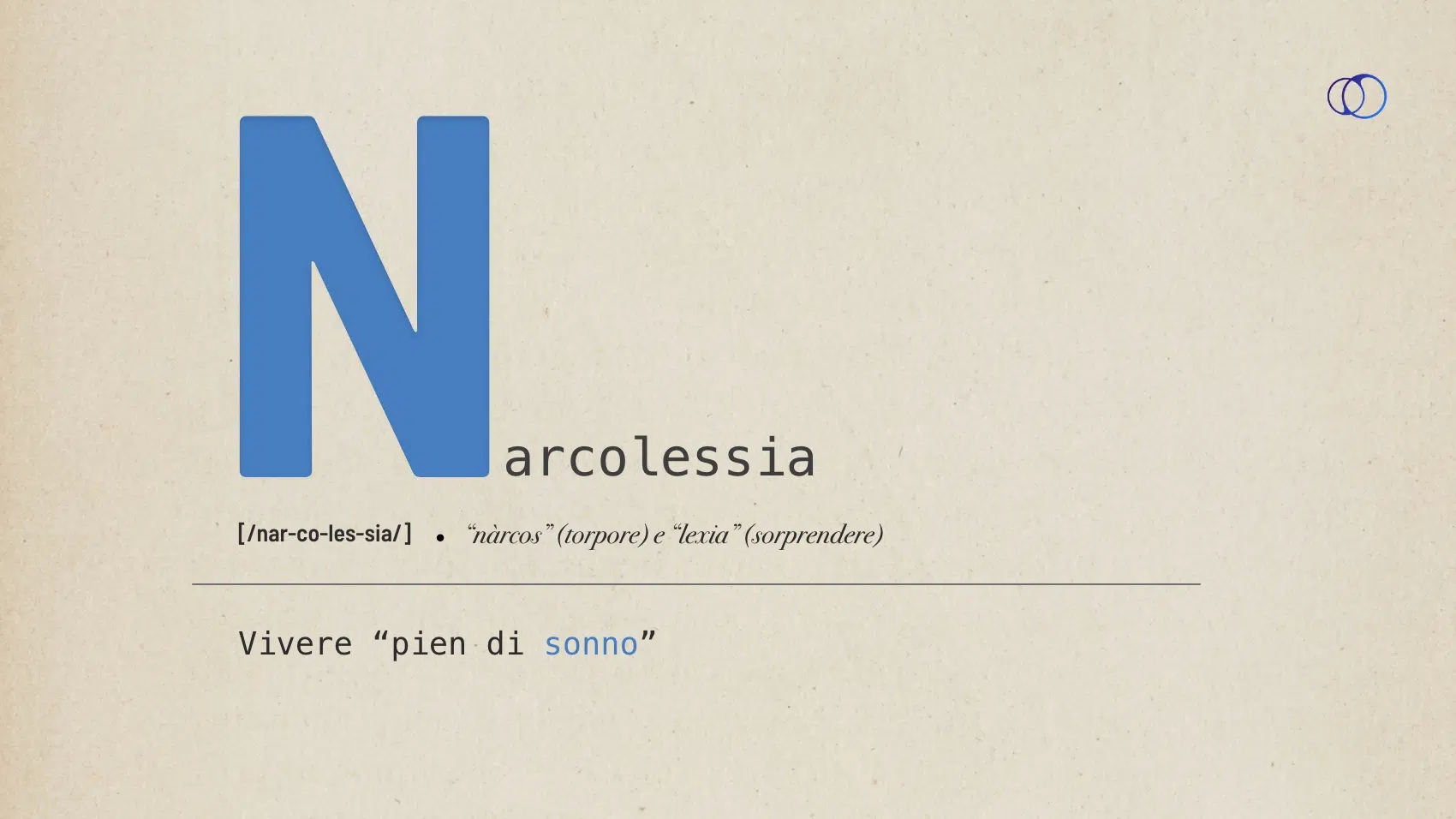Cos’è la narcolessia?
Attacchi di sonno irresistibili, rapide transizioni dalla veglia al sogno, visioni e allucinazioni, improvviso cedimento del tono muscolare scatenato da forti emozioni. Queste le principali caratteristiche della narcolessia, dal greco nàrcos (torpore) e lexia (sorprendere), la prima malattia del sonno ad essere stata descritta come tale alla fine dell’800 dal celebre medico francese Jean-Baptiste-Èdouard Galineau (Plazzi, 2019) e che già Dante sei secoli prima sembrava narrare nel suo lungo viaggio “pien di sonno” (Plazzi, 2013, Galassi et al., 2016).
La narcolessia che sopraggiunge in età pediatrica ha spesso un’influenza molto significativa sullo sviluppo emotivo, sul funzionamento sociale e sulla qualità della vita di chi ne soffre (Rocca et al., 2016; Szakacs et al., 2019; Simoncini Malucelli et al., 2023).
La Narcolessia di tipo 1
La narcolessia di tipo 1 (NT1) fa parte di quei disturbi del sonno definiti ipersonnie primarie del sistema nervoso centrale (ICDS-3, 2014).
La definizione che meglio identifica la narcolessia è ancora oggi quella del neurologo Nathaniel Kleitman che nel libro “Sleep and Wakefulness”, primo grande volume interamente dedicato alla medicina del sonno, la descrive come “una malattia caratterizzata dalla mancanza di chiari confini tra la veglia e il sonno” (Kleitman, 1963).
Tra i sintomi fortemente invalidanti che la caratterizzano vi è un’eccessiva sonnolenza diurna (con brevi periodi di sonno ristoratore in cui rapidamente compare la fase di sonno REM) e intrusioni del sonno REM durante la veglia e durante le fasi di transizione sonno-veglia (“REM dissociato”) ovvero paralisi del sonno, allucinazioni ipnagogiche ed episodi di cataplessia (improvviso cedimento muscolare del volto o di tutto il corpo pur rimanendo coscienti) (Kornum et al., 2017).
Questa rara e ancora altamente sottodiagnosticata malattia neurologica colpisce circa 4 persone su 10.000 e l’esordio può avvenire sin dall’infanzia (Longstreth Jr. et al., 2007, Thorpy & Krieger, 2014).
Continua a leggere l’articolo >> CLICCA QUI



